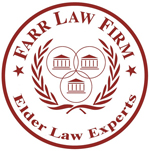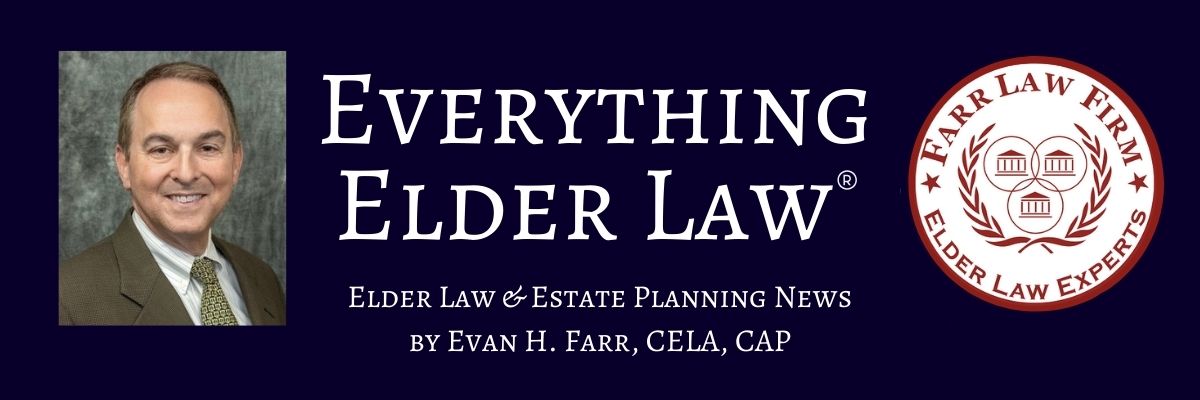What is Medicaid Asset Protection?
Medicaid Asset Protection is the process of protecting assets from having to be completely spent to pay for the devastating expenses of long-term care, while helping to ensure that you (or your loved one) get the best possible long-term care and maintain the highest possible quality of life, whether at home, in an assisted living facility, or in a nursing home. This process is also called Life Care Planning because it is designed to be an ongoing, life-long process.
If you are still healthy and not yet on the “long-term care continuum,” then instead of Medicaid Asset Protection Planning you should consider our Living Trust PlusTM Asset Protection Trust, which is a simpler and less expensive method of asset protection for clients who will most likely not need any long-term care for at least five years.
Protecting The Spouse:
With proper planning, a spouse who is able to stay at home can keep all of the couple’s assets and much or all income while Medicaid pays for the nursing home. The most important goal is typically to ensure that the spouse remaining at home is able to live the remaining years of his or her life in utmost dignity and not have to suffer a catastrophic reduction in his or her standard of living.
Protecting Quality of Life:
If you are single or widowed, the most important reason for you to engage in Medicaid Asset Protection Planning is for you to be able to enjoy the highest quality of life possible in the event you are forced to enter a nursing home. For instance, money that we protect for you in the process of getting you qualified for Medicaid can be used, once you are receiving Medicaid benefits, to provide you with an enhanced level of care and a better quality of life while you are in a nursing home. For instance, we will often encourage the families of our clients to use the protected assets to hire a private “sitter” or “helper” – someone to keep you company, help you with meals, etc., somewhat like a “surrogate daughter.” Money that we protect for you in the process of getting you qualified for Medicaid can also be used to purchase services or items for you that are not covered by Medicaid, such as dental work, vision aids, hearing aids, incontinence supplies, personal clothing and toiletries, and haircuts.
Protecting Children:
Some parents have saved and sacrificed their entire lives and have a strong desire to leave a financial legacy for their children. With proper Medicaid Asset Protection planning, this goal can be achieved while still qualifying for Medicaid.
Protecting Disabled Persons:
There are asset protection strategies that will allow you to protect your home and an unlimited amount of assets for the benefit of a disabled child or other disabled family member.
– Assist you in identifying your goals and objectives;
– Review the strategies that are available to help you achieve these goals; and
– Explain how we can help you achieve your goals by preparing a specially-designed Asset Protection Plan tailored to your assets and your goals and objectives.
After the Initial Consultation.
After the initial meeting, Mr. Farr will spend a great deal of time analyzing your situation, applying his specialized knowledge and experience, and performing the dozens of calculations necessary in order to come up with the best asset protection strategies for your situation, customized to achieve your specific goals on the basis of your income, assets, expenses, and medical condition. All of this information is then put into a written Asset Protection Plan, which will set out all of the strategies in detail, along with any options and alternatives that need your consideration. After your review, you will meet again with Mr. Farr or another attorney in the firm to go through and finalize the Asset Protection Plan so that it can then be implemented.
Background:
In this section, we confirm what you’ve told us about your health, income, assets, and expenses. This is important because the entire plan is based on this information. If your information is different, the plan will be different. We want to be sure that we understand your situation completely.
Objectives:
Why do we do asset protection planning? As mentioned above, most of our clients are interested in protecting their assets (a) for themselves, to be able to enjoy the highest quality of life possible within the confines of a nursing home; (b) for their spouse, if married, who will be remaining in the community, and (c) possibly for the benefit of their children. Some people also have specific goals relating to disabled beneficiaries, or related to their home or to federal and state income taxes, or federal and estate gift taxes. Every plan must be customized to achieve your specific goals on the basis of your specific income, assets, expenses, and health conditions.
Applicable Law:
We discuss the Medicaid law, tax law, and, where appropriate, the laws relating to Veteran’s Aid and Attendance.
Strategy:
There are dozens of different strategies that can be employed to protect assets. We walk you through each of these strategies that apply to your situation and discuss them with you to determine which ones appeal to you and would work for you and which ones are inappropriate. Whenever possible, we compare strategies and give alternatives.
Assumptions:
Our clients are often unable to give us all of the information which we would need to make a perfect plan. For example, many people do not know what day they will enter a nursing home, what nursing home they will enter, how much it will cost, when and how often the nursing home will raise its rates, how much will be covered by Medicare, and how much private pay money is required by the nursing home as a condition of admission. The plan is based on assumptions and is usually very accurate. However, as these variables become known, the plan is revised from time-to-time. In addition, the law changes frequently and the plan may need to be revised periodically to be sure that it complies with current law.
Additional Considerations:
This section is an attempt to answer the common questions which people have and avoid the ordinary pitfalls.
Action Plan:
This is a summary of the exact steps that need to be taken to implement the plan.
Implementation:
Our office assists you to the extent possible in seeing that this is done. For example:
– If real estate needs to be transferred to a spouse or child, our office will prepare the deed and record it for you.
– If you need to deal with financial institutions or insurance companies, our office will obtain all the necessary forms for your signature.
– If the plan calls for the purchase of an annuity, our office will assist you in dealing with the insurance company to be sure that a policy is furnished that will meet the ever-changing Medicaid requirements.
– Filing the Medicaid Application: The final phase of the process for the Medicaid long-term care assistance. Every item on the application must be documented and explained. We will do everything needed to prepare and file the application for you, and we will also be the ones to answer questions that the Department of Social Services may have about the application.
Our general rule is that if you can do it or we can do it, we will do it for you. We have people who do this every day, and it is easier for them to do it than it is for you to do it. Public benefits’ planning is extremely complex. Even our finest judges are often baffled — click here to see what the top Judges in our land say about Medicaid. Our job is to guide you through the Medicaid maze so that you can protect the maximum amount of assets with the least amount of effort on your part.
Many people have heard that you must do Asset Protection planning three or five years prior to entering a nursing home. This is simply not true. There is a Medicaid rule known as the “lookback period,” which is currently 5 years. However, this does not mean you have to do this type of planning 5 years prior to the nursing home; rather, it means there are penalties, in the form of periods of ineligibility for Medicaid, for certain types of planning done within five years prior to applying for Medicaid. We are of course fully aware of these rules and penalties and all other Medicaid requirements, and very careful to comply completely with the law. Having to deal with the 5-year lookback period is why for unmarried clients we are typically able to protect only forty to seventy percent of your assets.
Remember, if you are still healthy and not yet on the “long-term care continuum,” then instead of Life Care Planning and Medicaid Asset Protection Planning you should consider our Living Trust PlusTM Asset Protection Trust, which is a simpler and less expensive method of asset protection for clients who will most likely not need any long-term care for at least five years.
















Leave a comment
You must be logged in to post a comment.